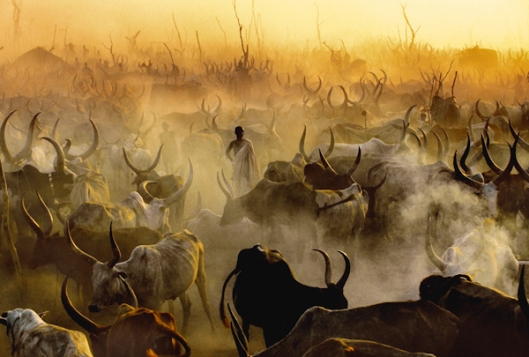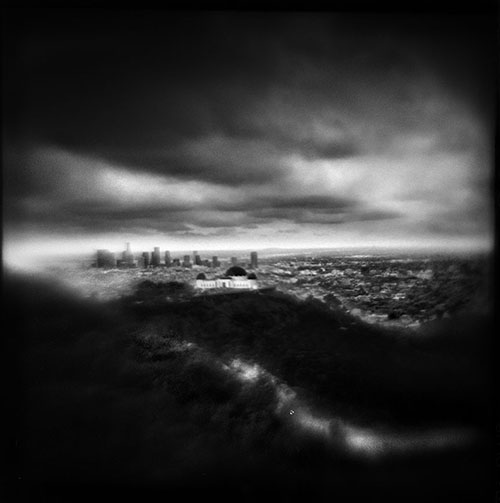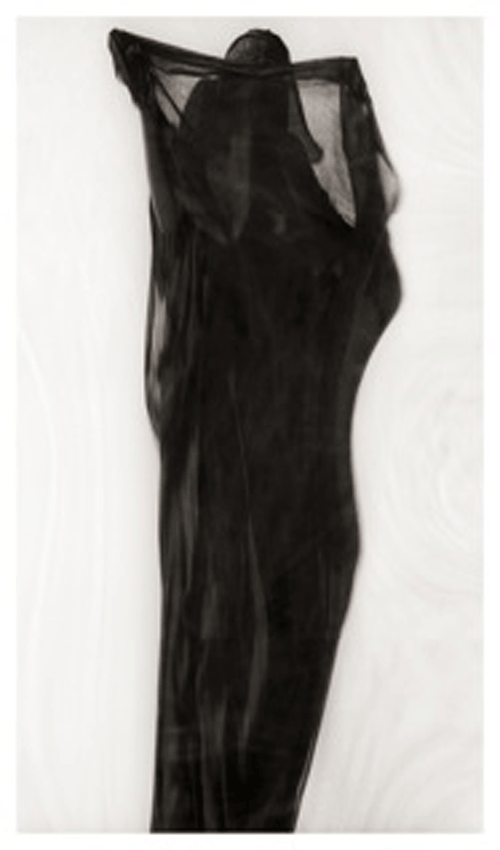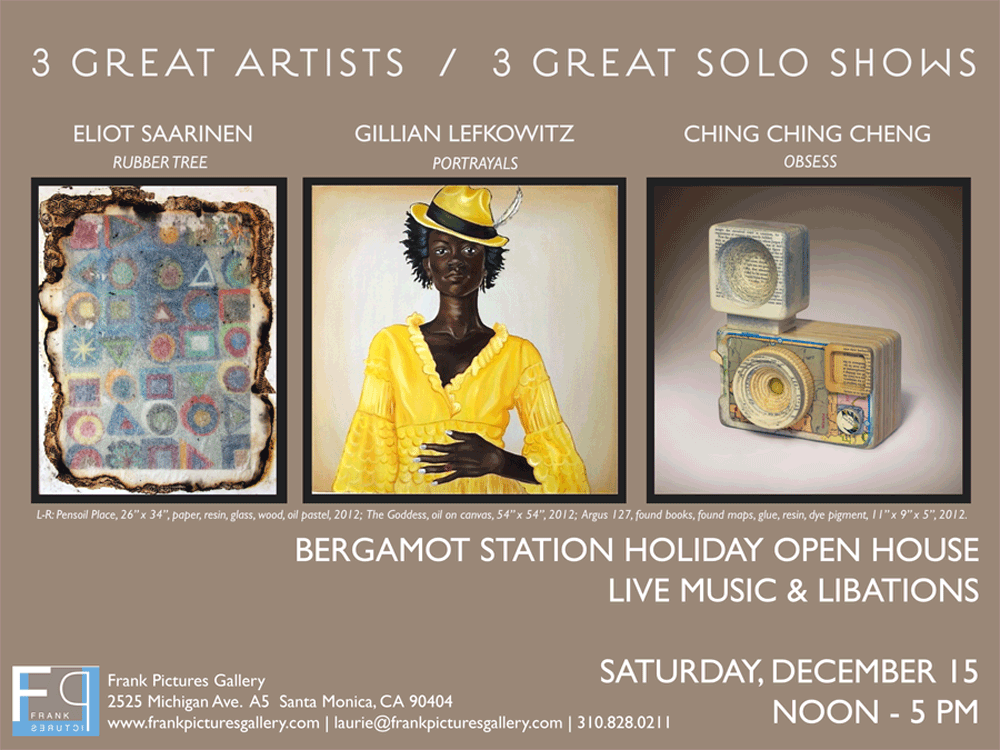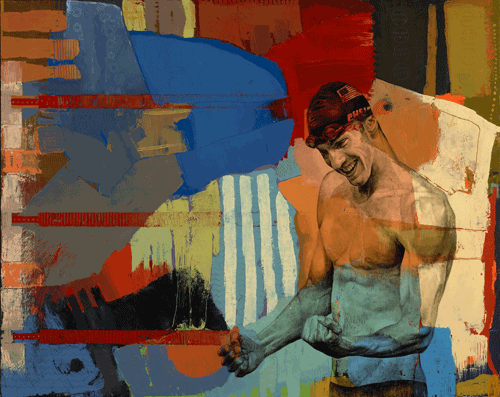Ed Cross left Kenya in 2009 after spending twenty one years of his life there. He had gone there for romantic reasons and to practice as an artist and live on the shores of the Indian Ocean in a palm thatched Swahili house – the latter he managed for ten good years.
1980’s Kenya was President Arap Moi’s Kenya – a sort of inefficient totalitarian state which bordered on the comic unless you were on the receiving end of it. Where African intellectuals and artists were deemed suspect by the authorities, many were in exile. The others only known about by a small group of African art experts. Gallery Watatu was the art colussus in Nairobi but by the time he arrived its charismatic director, Ruth Schaffner, was close to the end of her life.
Jak Katarikawe was the artist that turned his head. He was in Lilian Towers a plush modern hotel complex in downtown Nairobi allegedly named after Moi’s mistress for reasons he cant remember. Unlike Mombasa with its sense of soul and historic charm there was little in Nairobi that stirred him deeply until he wandered downstairs in an “exhibition area” and saw extraordinary works by a man he’d never heard of on the wall – Jak Katarikawe. There must have been about twenty black and white woodcuts – and one in particular caught his eye, and he remembered the title clearly “Escape by night – Bride price later”, it was a couple in a canoe paddling off at night.
Apart from Katarikawe most of his visual stimulation in those days came from art that had nothing to do with galleries made by people who wouldn’t have called themselves artists. Carvers of dugout canoes, a man in Mombasa who made impossibly realistic and suggestive gyrating dolls out of inner tubes, coat hangers and .. actually no one ever knew how he made them. Fabrics, shop signs, driftwood, Baobab trees,the multiplicity of different bone structures in faces from different ethnic groups, the vivid beauty of a still pristine Indian Ocean.
Years later after working for eight years as an artist himself and then as an art dealer he thought he knew the Kenyan art scene pretty well but missed a young artist called Cyrus Kabiru.
If Kabiru had been a young man in the 90s he might have ended up an anonymous artisan like the unnamed genius who produced the gyrating dolls. Other than being taken up by Jean Pigozzi (as Richard Onyango was) or being the darling of Ruth Schaffner as was Jak and a small group of lucky artists, there was limited scope for people with creative brilliance. The internet changed all that.
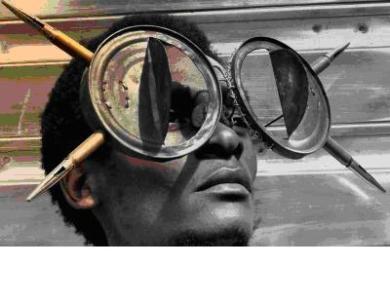
Cyrus Kabiru | C-Stunner : Revolution | Mixed media sculpture | 2009
Fast forward to 2013 and Kabiru (aged 28 yrs) yesterday accepted a TED Fellowship at TED’s Long Beach conference in front of thousands of applauding delegates. On March 1st – 9th Ed will be curating a show for him at Frank Pictures Gallery in Santa Monica https://www.facebook.com/events/212693828874991/. He “discovered” Kabiru (in the Christopher Columbus sense), on Facebook. Cyrus had posted a photograph of himself wearing one of his C-Stunners eyewear sculptures – it was Revolution – which uses spent bullets in its construction. As soon as he saw the image and quickly looked at other works on his Tumblr etc Ed thought here is someone who has got what it takes – the work radiated a confident perfectionism and obsessive quality that great artists generally have – unless you are a purely conceptual artist in the end there is some artifact produced and it’s that attention to detail that makes it great. The work was literally and metaphorically visionary. It spoke of the aspirations of a generation looking beyond the cliches about Africa – it was art that transcended borders in more ways than one.
It was only later that Ed learned that the roots of Kabiru’s obsession with making “glasses” came from a specific family fable:

Cyrus Kabiru | C-Stunner : Gallata Mask| 13 x 33 x 21cm | Mixed media sculpture | 2012
Kabiru has been creating his ‘spectacles’ since childhood. First as toys for himself and later for his class-mates as a way of bartering his way through school work. His passion for ‘glasses’ stems from his father’s phobia about them. As a child, the artist’s grandparents punished his father severely for losing a pair of glasses that they had made huge sacrifices to provide him with. When the young Kabiru began playing with his father’s glasses, he was told by his father “if you want to survive in my house you will make your own glasses”. Taking him at his word, the young boy embarked on what would become his lifetime mission to create eyewear out of “trash”.
His father, bemused by the explosion of toy glasses became an unwitting curator, decreeing that his son should “only make the glasses when there is a reason” by recreating again and again the object of his father’s pain, and his grandparent’s hope, Kabiru began to create a body of work that would have symbolic significance well beyond his own family story, ultimately becoming a metaphor for the power of creative transformation both within Africa and worldwide.
Kabiru has been featured in group shows throughout Europe and the Middle East including Istanbul Design Biennale, Istanbul, Perimeter Art & Design, Paris, Rosetta Arts, London, Fashion Space Gallery, London College of Fashion, London, and upcoming shows in Dubai and Paris.
His C-STUNNERS were recently worn by Bobby Womack on the cover of Clash Magazine’s December 2012 issue and he has been profiled by the New York Times (September 2012), The International Herald Tribune (September 2012), and Under the Influence Magazine’s Africa Issue (November 2012).
For more information about Kabiru’s work, you can watch the following video links below:
Ed Cross Fine Art – http://www.youtube.com/watch?v=N3iWXSSj_6Y
MTV Base – http://www.mtvbase.com/shows/touching-base/
Manufactured – http://vimeo.com/33167682
If you are in Los Angeles come along to see Kabiru’s biggest yet exhibition of his C-Stunner works and his first show in the U.S.A. at Frank Pictures March 1-9, 2013 11.30am – 6.30pm
Artist Reception: Saturday, March 2nd 5.30pm – 8.30pm
Frank Pictures Gallery
Bergamot Station, A-5
2525 Michigan Avenue,
Santa Monica, CA 90404
310.828.0211 tel
The C-Stunner Los Angeles tour is sponsored by Stunner of the Month, a monthly sunglass subscription service that is changing the way you see, and the way others see you. StunMo founders discovered and acquired some of Kabiru’s work more than a year ago. As avid supporters of bringing his creations to more people, they offered to put on a series of events while he is in Los Angeles to help one stunner from another. Stunner of the Month: It’s not just a brand, it’s a lifestyle. Start stunnin’ today, go to www.stunnerofthemonth.com.
London based Ed Cross Fine Art specialises in contemporary visual art from the African continent and its Diaspora. http://www.edcrossfineart.com

